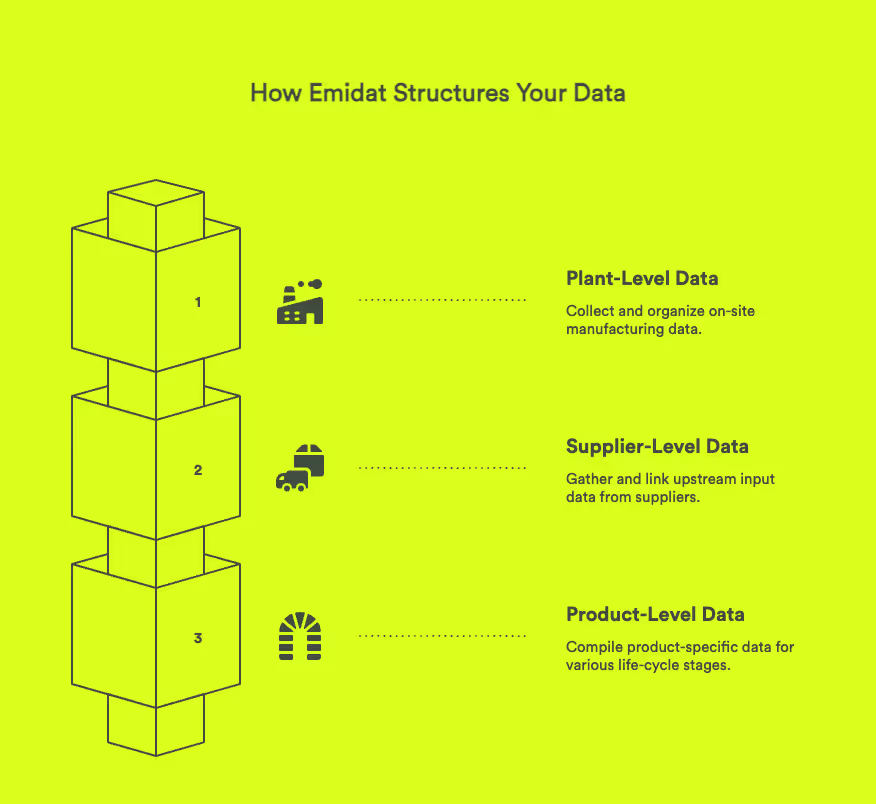Considérez les données primaires comme les faits que vous pouvez mesurer, évaluer ou extraire directement de l'EPD d'un fournisseur ; les données secondaires sont les moyennes vérifiées que vous empruntez à une base de données telle que ecoinvent ou GaBi. Une répartition adéquate permet de maintenir votre charge de travail à un niveau réaliste et de satisfaire les vérificateurs tiers conformément à la norme EN 15804.
Lorsque vous devez collecter des données primaires
- Cela influe sur le résultat. Si un flux unique est susceptible de contribuer à plus de 10 % à une catégorie d'impact, les vérificateurs attendent des chiffres spécifiques à l'usine ou au fournisseur. Si vous lésinez sur ce point, vous risquez de vous voir attribuer une « non-conformité majeure ».
- Il s'agit d'un produit unique ou spécifique à un fournisseur. Une nouvelle résine biosourcée, un alliage sur mesure, un procédé de durcissement interne : tout ce qui n'est pas bien représenté dans les bases de données appartient à la catégorie primaire.
- Vous pouvez le mesurer ou le peser. Électricité en kWh, eau en m³, déchets en kg, carburant en litres : autant d'éléments faciles à mesurer. Il est plus difficile de justifier l'utilisation de variables de remplacement dans les bases de données lorsque les chiffres figurent sur vos factures de services publics.
Quand les données secondaires sont tout à fait acceptables
- Processus de fond ou de niveau 2+ : pensez à l'électricité du réseau utilisée en amont dans votre chaîne d'approvisionnement en ciment.
- Les matières premières (par exemple, l'acier moyen mondial) sont déjà couvertes par des ensembles de données fiables et évalués par des pairs.
- Émissions en amont qu'il est impossible de mesurer sans études invasives : explosifs miniers, mélanges de carburants pour le transport maritime, etc.
Les trois contrôles de qualité des données utilisés par chaque opérateur de programme (OP)
- Représentativité temporelle : les données ne doivent pas dater de plus de cinq ans au moment de l'étude.
- Adéquation géographique et technologique : la région et la technologie de production du jeu de données doivent correspondre autant que possible aux vôtres.
- Précision : visez une incertitude de ±10 % sur les flux à fort effet de levier ; documentez la manière dont vous avez calculé ou mesuré chaque valeur.
En cas de doute : mesurez ce qui est spécifique et significatif. Laissez les processus en arrière-plan, comme l'exploitation minière en amont ou l'acier de base, à des bases de données fiables.
Vous produisez déjà des EPD ? Vous êtes déjà presque prêt pour les DPP ! Découvrez ici ce qui peut être repris et ce qu'il faut ajouter.
Dans la section suivante, nous montrerons comment la conception du meuble à trois tiroirs d'Emidat transforme ce principe en un flux de travail sans effort.






